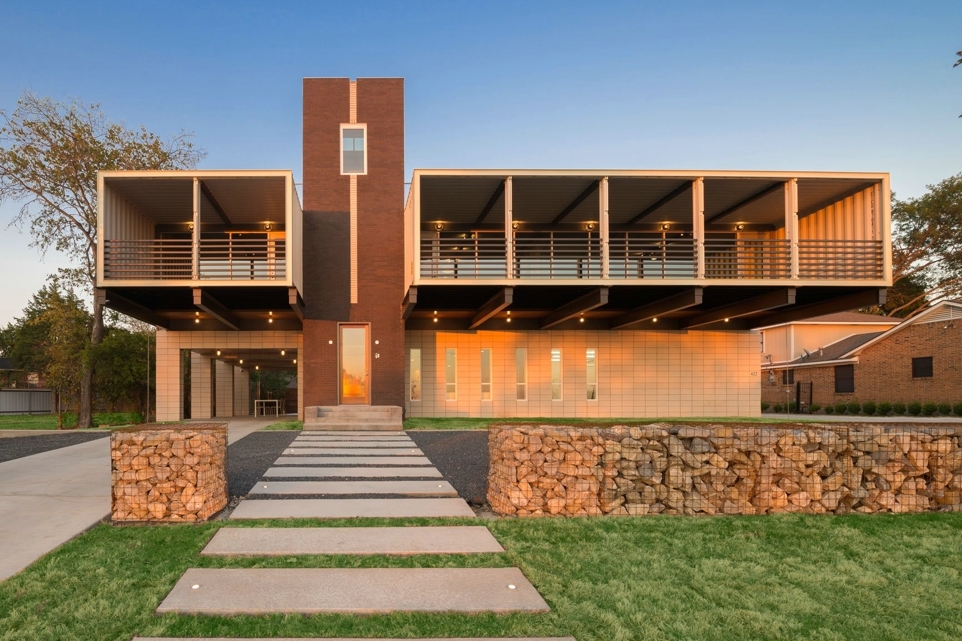Breaking Down Building Codes: Are Modular Container Homes Legal Worldwide?
Are Modular Container Homes Legal Worldwide?
The legality of modular containerized housing varies significantly across the globe, but follows these core principles:
The legality of modular container housing depends on the legislative framework of the specific country/region, and needs to be combined with the nature of the land, the type of declaration (temporary/permanent), and the degree of transformation of the three-dimensional comprehensive judgment. Priority should be given to consulting the local housing and construction departments or professional legal organizations before actual operation.
1. Temporary Building Properties
Most countries allow the existence of containerized housing as a temporary building, subject to declaration and obtaining construction approvals. For example, China requires the declaration of temporary building permits, which can be used legally after meeting the conditions. Some European countries (e.g. Holland, Germany) categorize it as a movable building and need to pass the temporary land use approval.
2. Requirements for matching the nature of the land
Agricultural land, ecological protection zones and other land with special characteristics usually prohibit construction, even as temporary buildings.
Industrial land and commercial land have a higher approval rate, but need to meet fire and safety codes

3. Compliance with the remodeling standards
Containerized housing may be redefined as a permanent structure and trigger stricter approvals if it involves the following modifications
Fixed foundation construction
Amenity remodeling such as water and electricity connections
Multi-story stacked structures (additional structural safety certification required for more than 2 stories)
4. Policies of Modular Containerized Housing in Different Regions
I. China
Approval Classification
Temporary building: need to declare temporary building permit (usually valid for 2 years), prohibit fixed foundation and permanent water and electricity connection
Permanent buildings: need to comply with assembly building standards (e.g. the “Implementation Plan for Peak Carbon in Urban and Rural Construction” requires 40% of assembly buildings by 2030)
Land restrictions
Industrial/commercial land: high approval rate, need to submit planning and design plan for recordation
Rural residential land: rural construction planning license is required, and the area is restricted by the “one house, one residence” policy.
Cultivated land/forest land: strictly prohibited for residential use, only agricultural facilities are allowed (e.g. tool storage).
Regional Features
Shanghai and other cities have implemented an “area incentive” policy to encourage the development of containerized housing for commercial use.
II. Australia
Certification Standards
AS/NZS 3632 and other building standards need to be met, focusing on the review of structural safety and energy efficiency (such as lightweight steel frames, composite panels and other materials mandatory certification)
Multi-storey buildings are required to provide additional fire and seismic assessment report.
Application Scenarios
Priority approval for remote area infrastructure (such as schools, medical clinics) and post-disaster reconstruction projects
III. Africa Region
Policy Orientation
Focus on supporting affordable housing and post-disaster emergency housing, allowing temporary occupation of public land (special government approval required)
Encourage the integration with renewable energy (e.g. solar energy system), and some countries give tax breaks.
Restrictions
Restrictions on commercialization of containerized housing in urban core areas (e.g., restaurants and offices require separate approval)
IV. Europe and the United States
Approval Characteristics
Holland/Germany: categorized as a movable building, subject to temporary land use approval, and prohibited from stacking more than 3 layers
U.S.A.: Significant differences among states, California requires environmental assessment, Texas allows simplified approval process.
Incentives
Sweden, Norway and other Nordic countries mandatory BREEAM energy efficiency certification, compliance with standards can be subsidized
V. Japan and Southeast Asia
Japan
Minimum living area restrictions (≥25 square meters), seismic rating certification required
Southeast Asia
Thailand and Vietnam prioritize the approval of projects in tourist areas (e.g., vacation homes, B&Bs) and prohibit construction in ecological protection zones.
Comparison of Policy Trends
China ★★★☆☆☆ Cultivated land occupation, floor height restrictions Assembly building policy favoritism
Australia ★★★★☆☆ Material certification, energy efficiency Infrastructure support in remote areas
Africa ★★★★☆ Commercialization restrictions in urban planning areas Renewable energy integration
Europe ★★★★☆☆ Mobile building storey limitations Green building certification subsidies
5. Typical violation scenarios
Commonly recognized features of unauthorized construction globally include:
Illegal occupation of public space or arable land
Undeclared conversion to residential use
Exceeding the duration of the temporary building permit (typically 2 years in China)


